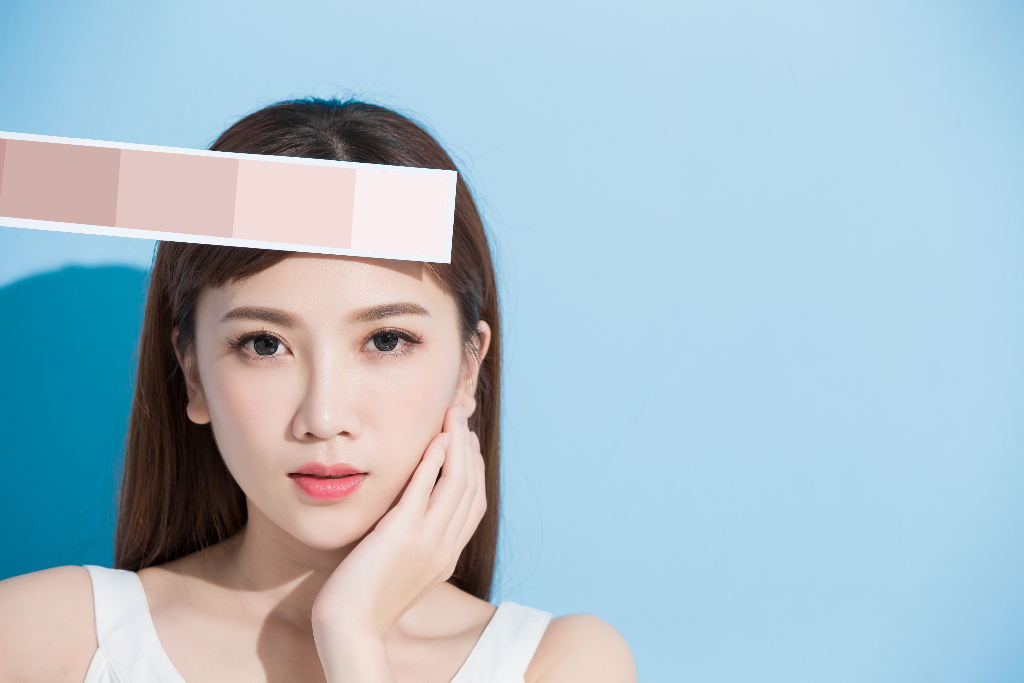In many respects, if you have a Mediterranean skin tone, then you have won the beauty lottery. Your delicious olive skin coloring makes your skin more resistant to sun damage. As a result, your complexion remains relatively wrinkle-free for a longer period of time.
When you wear the right colors, your skin glows warmly, just like the Mediterranean lands from which your skin tone gets its name. For you, finding the best clothing and makeup colors to flatter your skin tones comes down to understanding the elements that make up the Mediterranean skin tone. So, if you want to know, continue reading.
What is the Mediterranean skin tone?
If you’re familiar with celebrities like Salma Hayek, Zoe Saldana, or Jessica Alba, then you already have a basic understanding of the Mediterranean or olive skin tone. This skin tone is marked by undertones of yellows and greens, and depending on the person; it is neutral to warm in persuasion.
Often, this skin falls into the dark range of skin tones, the key phrase here being a range of skin tones. Some people with olive or Mediterranean skin tones possess lighter skin tones, while others have very dark skin. People with Mediterranean skin often look tanned even when they’re not.
It’s the skin’s undertones that determine what colors you should wear. Wearing the wrong color can make you look washed out or even sickly, depending on the color. Olive skin tends to be in the neutral range, which means it possesses elements of both warmth and coolness. That said, it’s not uncommon to see people with Mediterranean skin have some warm undertones, too.
Although people all over the world possess this skin tone, it’s very common in places like the Mediterranean and parts of Europe. It’s also common in parts of Asia and the Middle East. Because it’s common in this geographic area, olive skin tones are also often referred to as Mediterranean skin tones.
Do I have a Mediterranean skin tone: Do some tests

In order to find the right colors for you, you must determine for certain that your skin tone is a Mediterranean skin tone. It’s likely that you already know what type of skin tone you have, but if you don’t, there are a couple of simple tests you can do to determine what type of skin tone you have.
The Sunburn test
The sunburn test constitutes the first skin tone test, and it’s likely you’ve taken part in this test for most of your life, albeit unknowingly. Here’s the test: If you burn easily, you probably don’t have a Mediterranean skin tone. People who burn easily typically possess cool skin tones and are often fair-skinned.
However, those with a Mediterranean skin tone often tan easily. If this is you, then you can spend lots of hours in the sun without worrying about getting a sunburn. Although this isn’t a hard, fast rule – some exceptions exist – it’s the first thing you should consider as you’re trying to determine your skin tone.
The Fitzpatrick Skin Typing test
If you’ve been keeping track of your personal beauty profile for most of your life, then chances are you know about dermatologist Thomas B. Fitzpatrick, or you at least know about his test. The Fitzpatrick Skin Typing Test measures the coloring in people’s skin, going from level I to level VI. Level I is the lightest skin tones, while level VI is the darkest. People with Mediterranean skin tones typically land in the level VI area on the test.
The White Cloth test
This test works with both a pure white cloth or a white piece of paper. Hold the white cloth or paper next to your cheek. Does the contrast between the cloth or paper and your skin make your skin take on a green or yellow cast? Or perhaps a light brown one? Then, chances are, you have a Mediterranean skin tone.
What colors look good on a Mediterranean skin tone?

When it comes to selecting your make-up and clothing colors for the Mediterranean skin tone, it’s best to stick to colors that reflect the warm colors of nature. These include colors on the red and yellow side of the color wheel, including yellow or gold, corals, reds and oranges, and amber tones. Other colors that look great on you include maroon, brown, or plum colors.
If you don’t see your favorite colors in that list, don’t despair. Even so-called cool colors have warm versions which you can wear. If you gravitate toward the green or blue end of the spectrum in terms of taste in colors, then stick to mossy or olive greens and violet reds if you want to add these “warmed up” versions of cool colors to your wardrobe or make-up kit.
To add drama to your look, pick some neutrals, like mushroom gray, taupe, and cream. The ultimate contrast comes from wearing white, which makes your lovely Mediterranean skin tones stand out even more.
Finally, it’s okay to break the rules from time to time. Fashion and make-up should add a sense of fun and aliveness to your life.
The key here is to wear “less-than-complementary” colors away from your face. For example, if you’ve fallen in love with the color sapphire, add accents of the color in the form of a handbag or belt to your white or neutral outfits.
Final thoughts
The Mediterranean skin tone features neutral-to-warm undertones. It’s a skin tone that’s prevalent in many parts of the world, including the area near the Mediterranean Sea. If you have this skin tone, then chances are you tan easily and are relatively wrinkle-free. Your Mediterranean skin coloring looks best in warm earth colors, though warm versions of cool colors also look good on those who have this skin tone.

